 |
|
|
|
 |
|
 |
 |
 |
|
 |
 |
 |
|
|
|
 |
|
|
|
*Click on any picture to see full size. |
|
|
| A 1935 Model (M35) Field Service Uniform to a Major of the VVS |
|
|
 |
|
 |
|
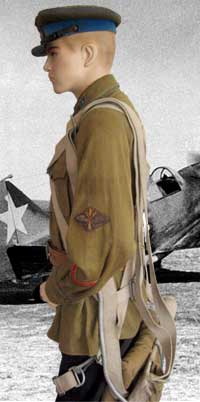 |
|
|
| In 1935, a new set of uniform regulations were introduced into the Red Army with specific changes for the Air Force. Air Force personnel received a new, blue uniform of a Western style (see other Soviet uniforms for example). However, air force personnel used a standard army brown gymnastiorka with air force insignia for active duty in the field. This was shirt tunic was combinded with either the blue or brown breeches depending on the wearer. The rank devices of 1924 were retained but were now associated with specific rank titles. For example, the two rectangles equal major, as opposed to a senior commander. |
|
|
|
The side view shows how the Soviet seat parachute fit on the wearer. The insignia of an active pilot was indicated by the winged sword and propeller on the left sleeve. The two red chevrons on the cuff were part of the rank hierarchy indicating a field grade officer. |
|
|
The major is standing in front of a LaGG fighter, approximately 1941, during the seige of Leningrad. The early uniform styles carried on well in to the war and did not start to significantly change until the re-introduction of shoulder rank in 1943. The major wears an M35 style visor cap, M35 blue breeches, officer boots, an early cu out star belt and an eary style parachute. It was common for Soviet pilots to wear their uniforms vs. flght gear in the cockpit. |
|
|
|
|
*Click on any picture to see full size. |
|
|
|
|
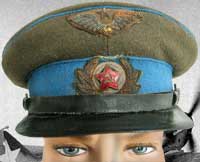 |
|
|
|
 |
|
|
|
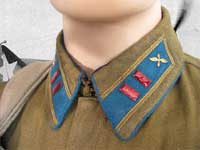 |
|
|
| This well used M35 officers cap shows all the hallmarks of this early design. The insignia work is all in heavy bullion. The two step circle is surrounded by a heavy wreath and surmounted bt a 'fat' star. The shape of the visor is squared in front as opposed to a curve. |
|
This close view of the pilot badge shows the great bullion work that went into these insignia. As shown, this is a large badge. |
|
This close view of the collar shows the two rectangular enamel devices for major. The gilt winged propeller is the branch of service device for air force and was the same in the army and navy. The azure blue tab also is for air force and consistent with the hat. The gold trim on the tab is for officers. |
|
|
|
|
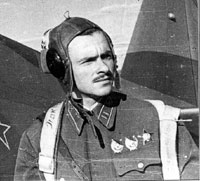 |
|
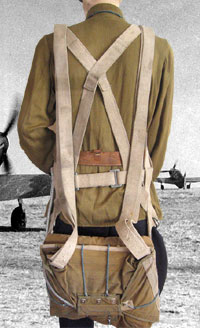 |
|
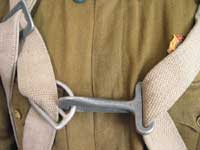 |
|
|
| Early parachutes of all nations had very straigtforward attachments to get in an out of the straps. It was only later as planes became faster that better 'quick release' mechanisms were invented. |
|
| This picture of Major P.A. Pokryshev of the 154 IAP shows him wearing the M35 field tunic in Leningrad 1942. As of this picture he is awarded two Orders of the Red Banner and an Order of the Red Star. |
|
|
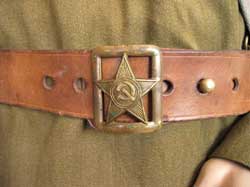 |
|
|
|
The rear shows the construction of the parachute straps and how the seat pack hung on the wearer. |
|
|
|
|
|
|
|
| All images © Tod Rathbone |
|

|
|
|
|
|
|
|
|
|
|
|
|
|
|
|
|
|
|
|
|
|
|
|
|
|
|
|
|
|
|
|
|
|
|
|
|
|
|


















